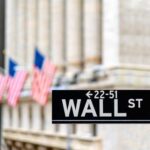The predictions and attitudes about what may come later in 2024 or in 2025 for the U.S. economy has been shifting at a very rapid pace in recent months.
From recessionary fears through much of 2023, the situation turned bullish late in the year with the hopes of incoming interest rate cuts – and then turned bearish again as inflation prints started coming in hotter than expected.
Still, despite the numerous voices warning of a looming crisis coming out in near chorus through March and April, the situation has apparently turned bullish again, with there being but one prominent stock market bear left standing as of late May 2024.
And yet, despite the most recent shift, data covering various facets of the economy remains highly worrying.
Consumer loan defaults spike to 2012 levels
Indeed, though the federal debt has taken much attention recently, given both the pace at which it is rising and the fact that the current burden stands approximately $7 trillion higher than the nation’s GDP, the borrowing done by everyday Americans is recently concerning.
Default rates on consumer loans have recently hit highs not seen since 2012, and have overtaken the figures from the COVID-19 recession, per the data compiled by Game of Trades, a data-driven research platform on X.
In the same post, the platform also stated that the high levels of debt coincide with the time when consumers have run out of free cash for purchases – hence the increased borrowing – and, when paired with the astronomical amounts yet to be repaid, indicate that ‘something is bound to break.’
U.S. credit card debt spikes near critical levels
Unfortunately, such data is not confined to consumer loans. The difference in data between May 2023 and February 2024 demonstrates that credit card balance – along with delinquencies – has risen by about $150 billion – from $986 billion to $1.13 trillion.
What makes the figure even more worrying is that observations and analysis covering the Great Recession demonstrate that Americans are dangerously near unsustainable levels of debt.
Indeed, using the total debt of this type, people are now, on average, less than $1,000 away from said crisis levels.
Companies worldwide increasingly default on their obligations
In addition to the Federal Government and individuals, companies are seemingly not faring much better.
Reports from mid-March indicate that as many as 26 U.S. companies have defaulted on their debt since the year started – very near to the 30 in the same period of 2009.
Things are, apparently, not much better across the Atlantic where, again the first three months of 2024, 8 European companies defaulted on their obligations – twice as many as in any previous year since, again, 2008.
Finally, however, the March report concluded by stating that it is expected that the delinquency rates – at least in Europe – will drop to their usual levels before the end of the year given the expected economic recovery and interest rate cuts.
Disclaimer: The content on this site should not be considered investment advice. Investing is speculative. When investing, your capital is at risk.








